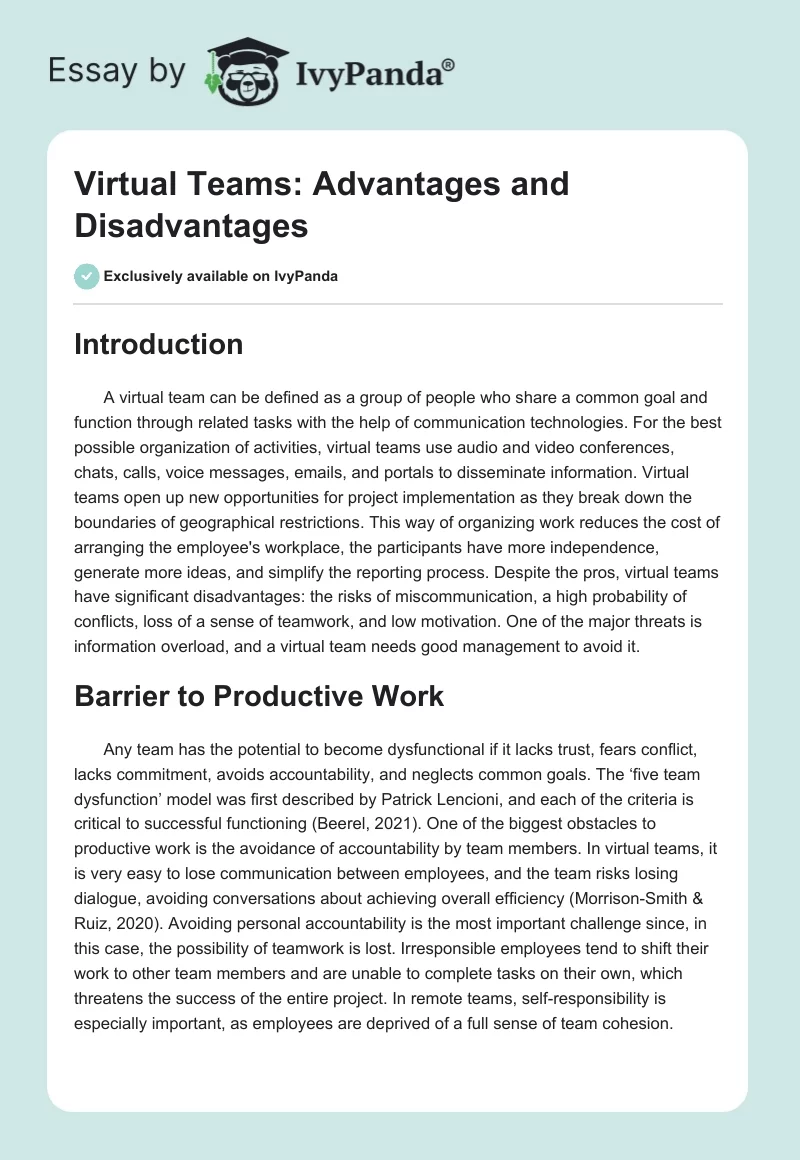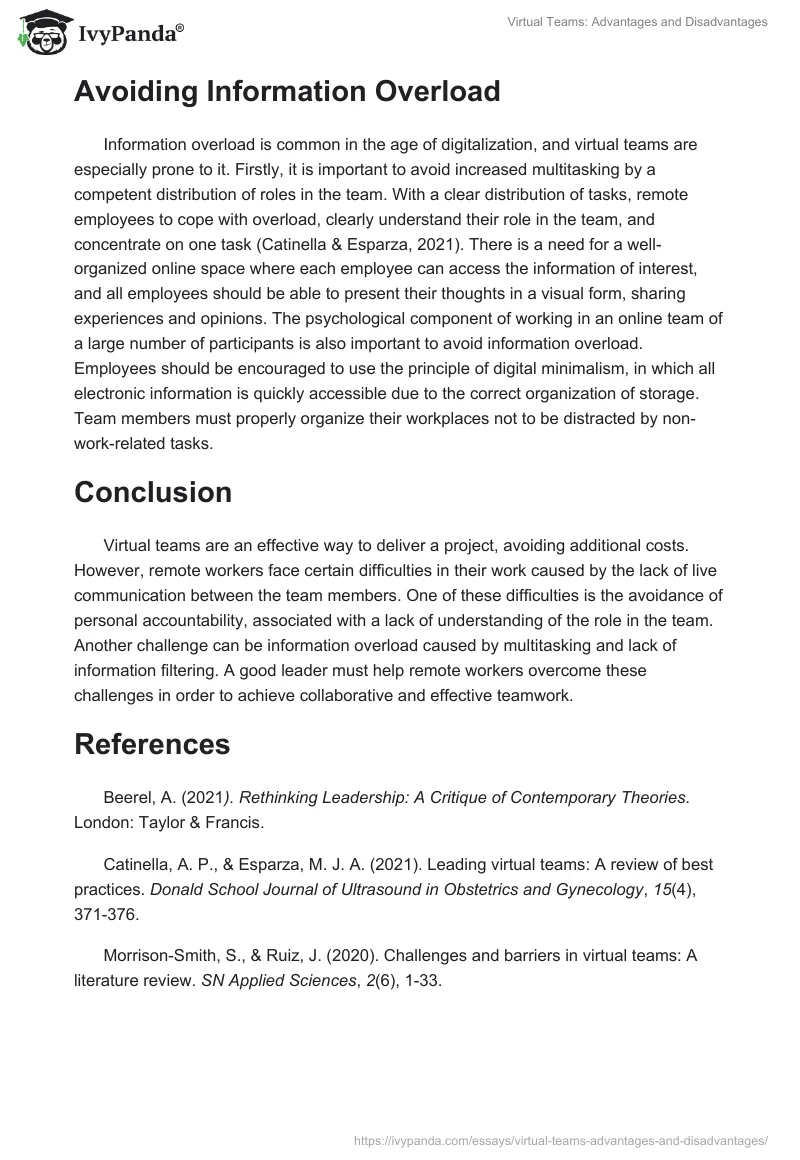Introduction
A virtual team can be defined as a group of people who share a common goal and function through related tasks with the help of communication technologies. For the best possible organization of activities, virtual teams use audio and video conferences, chats, calls, voice messages, emails, and portals to disseminate information. Virtual teams open up new opportunities for project implementation as they break down the boundaries of geographical restrictions. This way of organizing work reduces the cost of arranging the employee’s workplace, the participants have more independence, generate more ideas, and simplify the reporting process. Despite the pros, virtual teams have significant disadvantages: the risks of miscommunication, a high probability of conflicts, loss of a sense of teamwork, and low motivation. One of the major threats is information overload, and a virtual team needs good management to avoid it.
Barrier to Productive Work
Any team has the potential to become dysfunctional if it lacks trust, fears conflict, lacks commitment, avoids accountability, and neglects common goals. The ‘five team dysfunction’ model was first described by Patrick Lencioni, and each of the criteria is critical to successful functioning (Beerel, 2021). One of the biggest obstacles to productive work is the avoidance of accountability by team members. In virtual teams, it is very easy to lose communication between employees, and the team risks losing dialogue, avoiding conversations about achieving overall efficiency (Morrison-Smith & Ruiz, 2020). Avoiding personal accountability is the most important challenge since, in this case, the possibility of teamwork is lost. Irresponsible employees tend to shift their work to other team members and are unable to complete tasks on their own, which threatens the success of the entire project. In remote teams, self-responsibility is especially important, as employees are deprived of a full sense of team cohesion.
Avoiding Information Overload
Information overload is common in the age of digitalization, and virtual teams are especially prone to it. Firstly, it is important to avoid increased multitasking by a competent distribution of roles in the team. With a clear distribution of tasks, remote employees to cope with overload, clearly understand their role in the team, and concentrate on one task (Catinella & Esparza, 2021). There is a need for a well-organized online space where each employee can access the information of interest, and all employees should be able to present their thoughts in a visual form, sharing experiences and opinions. The psychological component of working in an online team of a large number of participants is also important to avoid information overload. Employees should be encouraged to use the principle of digital minimalism, in which all electronic information is quickly accessible due to the correct organization of storage. Team members must properly organize their workplaces not to be distracted by non-work-related tasks.
Conclusion
Virtual teams are an effective way to deliver a project, avoiding additional costs. However, remote workers face certain difficulties in their work caused by the lack of live communication between the team members. One of these difficulties is the avoidance of personal accountability, associated with a lack of understanding of the role in the team. Another challenge can be information overload caused by multitasking and lack of information filtering. A good leader must help remote workers overcome these challenges in order to achieve collaborative and effective teamwork.
References
Beerel, A. (2021). Rethinking Leadership: A Critique of Contemporary Theories. London: Taylor & Francis.
Catinella, A. P., & Esparza, M. J. A. (2021). Leading virtual teams: A review of best practices. Donald School Journal of Ultrasound in Obstetrics and Gynecology, 15(4), 371-376.
Morrison-Smith, S., & Ruiz, J. (2020). Challenges and barriers in virtual teams: A literature review. SN Applied Sciences, 2(6), 1-33.


